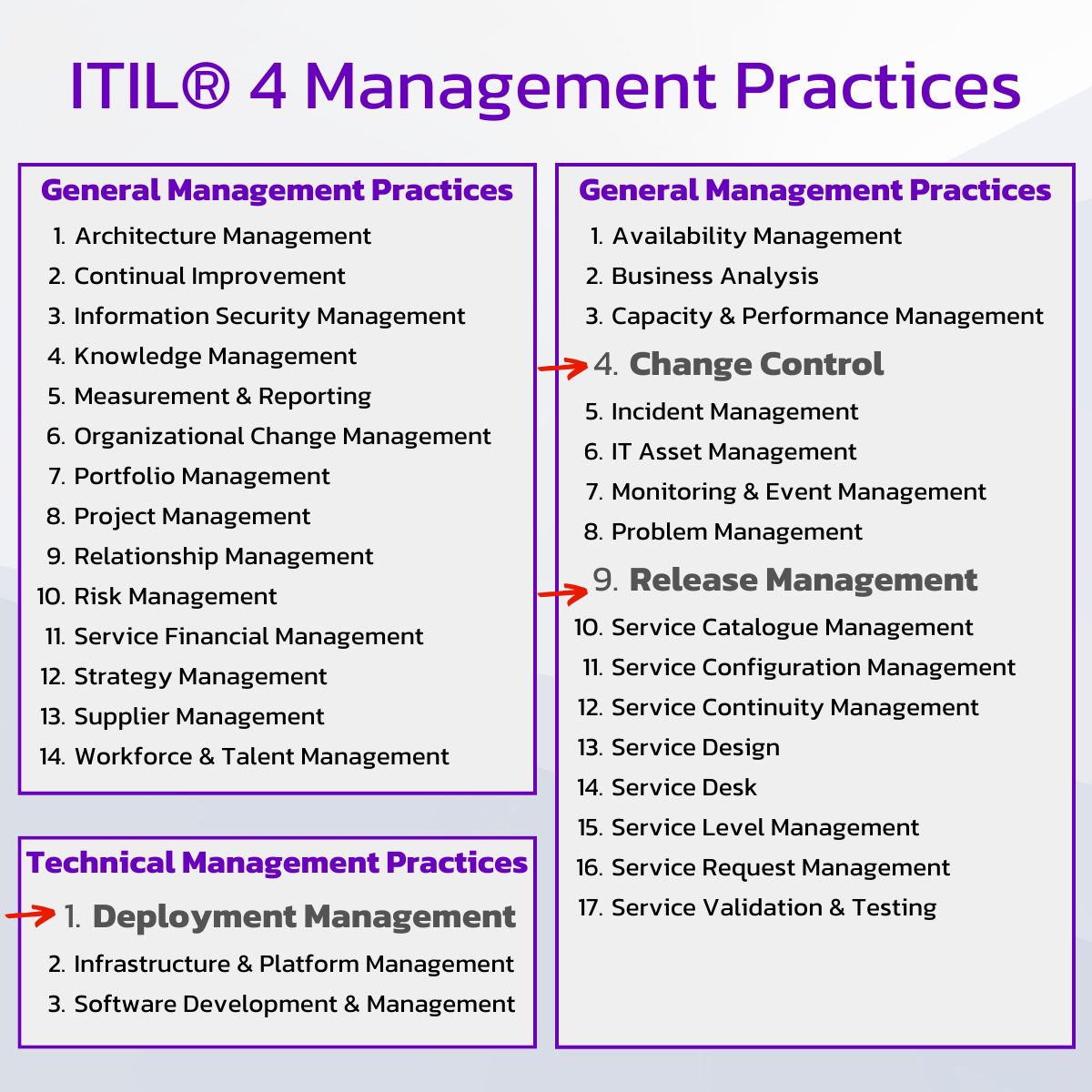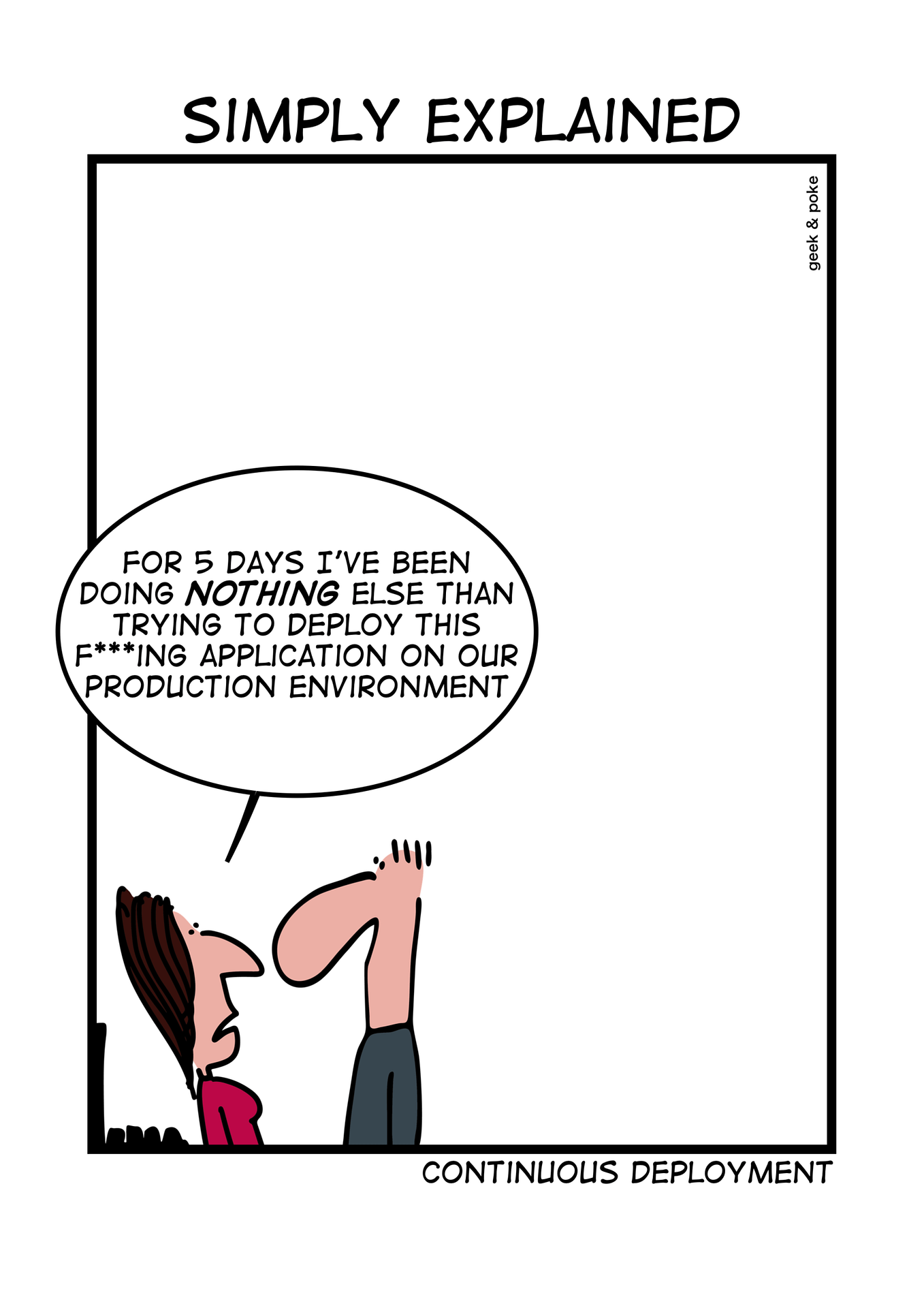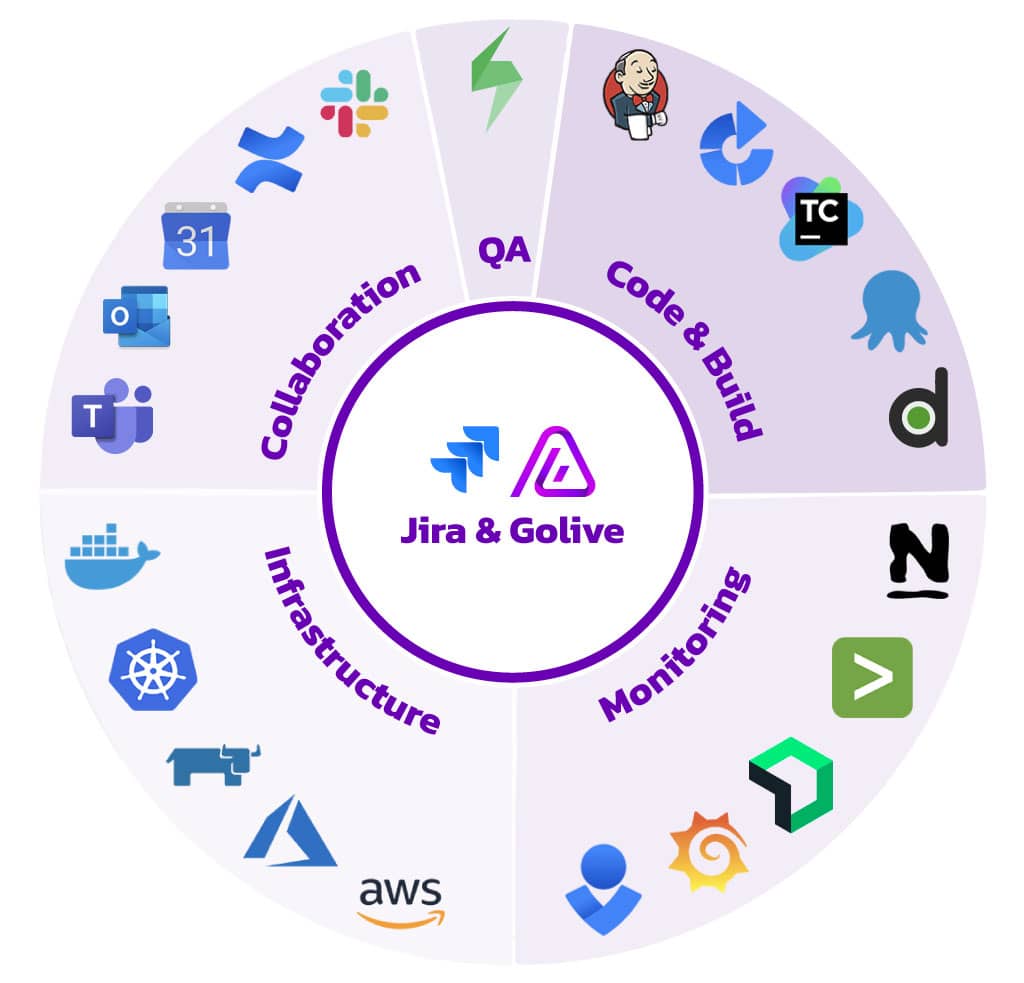Key Highlights
- Learn about ITIL 4's Deployment Management practice and its integration with Change and Release Management.
- Explore various deployment techniques and best practices to enhance efficiency.
- Understand key metrics to measure success and how to choose the right deployment tools.
You've heard about the Deployment Management practice part of ITIL4 (Information Technology Infrastructure Library version 4) and you would like to learn more about it?
Previous ITIL versions have placed focus on the processes. In contrast, ITIL 4 emphasizes practices while giving the organization the flexibility to implement specific processes. In this blog post, let's deep dive into the ITIL4 Deployment Management practice and understand what best practices can apply to your own context.
What's Deployment Management?
Every software update, whether a bug fix, security patch, or new feature, needs to be deployed without disrupting users or operations. Deployment Management is the process of moving these changes into production in a controlled and reliable way, reducing risks like downtime, failures, or security issues. Without it, software updates can lead to instability, business interruptions, and security vulnerabilities.
Deployment Management focuses on moving changes into production, but it’s often confused with Release Management and Change Management. Each has a distinct role in software deployment. If you want a detailed breakdown of the differences, check out this guide on Deployment vs. Release.
Over time, deployment methods have evolved. Traditional IT relied on manual processes, scheduled downtimes, and rigid approvals, which often slowed down releases. With the rise of Agile, DevOps, and CI/CD, automation has made it possible to deploy updates faster and more frequently while reducing risks. Instead of launching large, high-stakes releases, teams can now roll out smaller, incremental updates with continuous monitoring. If you want to explore how Continuous Integration, Continuous Delivery, and Continuous Deployment improve software deployment, check out this guide on CI/CD.
While these modern approaches focus on speed, ITIL 4 provides a structured framework that ensures software deployments are well-planned, governed, and aligned with business needs. It helps organizations balance agility with control, so deployments happen quickly while supporting service stability and long-term reliability.
Let’s take a closer look at Deployment Management within ITIL 4.
Deployment Management ITIL4
Deployment Management aims to deliver changes to environments in "the BETTER, FASTER, and CHEAPER" way. ITIL 4 Foundation describes the purpose of the Deployment Management practice and its importance between Change and Release Management. 3 practices are linked and necessary to deliver services both fit for use and purpose:

Deployment vs. Release vs. Change Management: Key Differences
Deployment, release, and change management are closely connected in IT service management, but they serve different purposes.
- Deployment is about moving components to target environments. It’s a technical activity, like pushing code to a production server or updating configurations across environments.
- Release Management focuses on making new or changed services available to users. A release may include several deployments, along with documentation, training, and communication to ensure everything is ready for end-users.
- Change Management ensures that changes are assessed, approved, and scheduled with minimal risk. It applies to both releases and deployments, particularly when they impact live environments.
Here’s a practical example:
A development team finishes a feature. The change is reviewed and approved through Change Management. The technical components are deployed to production by the Deployment team. Once everything is verified and communicated, the Release Manager officially makes the feature available to users.
In ITIL 4, these practices are treated separately to reflect the complexity of modern delivery pipelines. Organizations often deploy code continuously, but release it only when the business is ready. Separating these responsibilities increases flexibility and reduces risk.
Deployment Techniques
Zooming on the Deployment Management practice, there are several deployment techniques available and each company has its own preferences. Depending on their specific services and requirements, some use a combination of these approaches:
All the above-mentioned deployment techniques can be combined together depending on your needs and can be used for both on-premise and cloud deployments.
Deployment Strategies in the Context of ITIL 4
ITIL 4 encourages teams to tailor their deployment approach to the risk, urgency, and technical nature of each change. This means choosing the right deployment strategy as part of managing and planning deployments effectively.
Some common strategies include:
- Big Bang: All changes are deployed at once. Simple but carries high risk if something goes wrong.
- Blue-Green: Maintains two live environments—one active, one idle. You switch traffic when the new version is stable.
- Canary: Releases changes to a small subset of users first, reducing risk and enabling real-time validation.
- Rolling: Updates systems incrementally over time or by server group.
- Feature Toggles: Deploys code that can be selectively activated, giving more control over the release.
These strategies align with ITIL 4’s emphasis on adaptability and value delivery. They also support collaboration between development and operations by enabling safer, more controlled rollouts.
For a more detailed comparison, visit our dedicated article: 8 Deployment Strategies Explained and Compared

Deployment Management Best Practices
Modern application development creates competitive differentiation by enabling rapid innovation. There are some essential guidelines to achieve success when building and deploying:
How to choose your Deployment tool?
There are plenty of tools available for managing your deployments. To name a few: Jenkins, Octopus Deploy, TeamCity, Bamboo, AWS CodeDeploy, XL Release, Azure DevOps, GitLab CI, etc.
Which key elements should you consider when choosing a deployment tool?
There are many good reasons for an organization to use multiple deployment tools. And with many tools, it may be complex to get an overview of all cross-application deployments. That's why we have built the Golive for Jira.
It improves communication by connecting to your deployment tools and aggregating useful deployment information in Jira, a tool often used by the whole organization. It displays your cross-platform deployment history, and also helps you schedule your next deployments!

KPIs and Success Metrics
Measuring the effectiveness of your Deployment Management practice ensure continuous improvement and alignment with business objectives. By tracking the right Key Performance Indicators (KPIs) and success metrics, you gain valuable insights into the efficiency and effectiveness of your deployment processes.
Key Performance Indicators (KPIs)
- Deployment Frequency: Track how often you deploy new features, updates, or patches. High deployment frequency often indicates a mature CI/CD pipeline and can correlate with faster time-to-market and increased business agility.
- Change Failure Rate: Measure the percentage of deployments that lead to failures in production. A lower change failure rate signifies robust deployment practices and effective quality controls.
- Mean Time to Recovery (MTTR): This KPI tracks the average time taken to recover from a deployment failure. A shorter MTTR reflects an efficient incident response process and resilient deployment strategies.
- Lead Time for Changes: This metric measures the time from code commit to deployment in production. Reducing lead time can help improve development speed and responsiveness to market demands.
- Deployment Success Rate: The ratio of successful deployments to total deployment attempts. A high success rate indicates effective testing and validation processes.
Success Metrics
Gauging customer satisfaction through surveys and feedback is essential, as happy customers often reflect successful deployments with minimal disruptions. To ensure continued success, it's important to monitor application performance metrics post-deployment, such as response times, error rates, and system resource usage. Stable or improved performance in these areas indicates a successful deployment.
Another critical aspect to track is the user adoption rate, which measures how quickly and extensively new features are adopted by users. High adoption rates typically signify that updates are well-received and valuable. Additionally, monitoring the volume of support tickets related to recent deployments is valuable; a decrease in support tickets can indicate more reliable deployments.
Lastly, evaluating the cost-efficiency of your deployment process by comparing the resources spent versus the value delivered provides valuable insights. Efficient use of resources often aligns with optimized deployment practices, ensuring that the overall process remains cost-effective and beneficial.
And to conclude, fix this...
In summary, Deployment Management ITIL 4 bridges the gap between Change Control and Release Management. By adopting the right deployment techniques and tools, you ensure that changes are delivered in a better, faster, and cheaper way. Effective Deployment Management not only enhances service quality but also supports continuous innovation and operational excellence.
Key Takeaways
- Adopt Flexible Deployment Techniques: Utilize a combination of phased delivery, continuous delivery, big bang deployment, and pull deployment to suit your specific needs.
- Measure and Improve: Track KPIs like deployment frequency, change failure rate, and mean time to recovery to continuously enhance your deployment processes.
- Choose the Right Tools: Select deployment tools that align with your team’s expertise, offer robust automation capabilities, and integrate well with your existing systems.
By focusing on these key areas, you can optimize your deployment management practice and drive significant improvements in your IT service delivery.
Transform your Test Environment Management with Apwide Golive:
Leading companies have already Golive as part of their DevOps toolchain:





Free trial / Free forever up to 10 Jira Cloud users!
FAQ
People also ask
Deployment is necessary to deliver improvements, fixes, and new features to users while preserving the integrity of existing services. Without a structured deployment process, changes can lead to instability, business interruptions, or security vulnerabilities. A well-managed deployment process helps organizations balance agility with control, ensuring that updates support business needs effectively.
The major steps in release and deployment typically include:
- Planning: Define the scope, objectives, and schedule for the release and deployment activities.
- Build and Configuration: Develop and configure the components to be released, ensuring they meet the required specifications.
- Testing and Validation: Conduct thorough testing to verify that the components function as intended and meet quality standards.
- Deployment: Move the components into the live environment, following established procedures to minimize disruption.
- Early Life Support: Provide support during the initial period after deployment to address any issues that arise.
- Review and Improvement: Evaluate the deployment process and outcomes to identify lessons learned and opportunities for improvement.
These steps help ensure that changes are implemented effectively, aligning with ITIL 4 practices.

Great insights on ITIL4 Deployment Management! I appreciate how you broke down the key concepts and practical applications. Looking forward to implementing some of these strategies in my organization. Thanks for sharing!
Great breakdown of ITIL4 Deployment Management! I appreciate how you outlined the key processes and their importance in ensuring smooth deployments. The practical tips for implementation are particularly helpful. Can’t wait to apply these insights in my team!
Thank you for this informative post! I found the explanation of ITIL4 Deployment Management really insightful. The practical tips on integrating deployment processes in a seamless manner are especially helpful. Looking forward to applying these concepts in my own projects!
Great insights on ITIL4 Deployment Management! I appreciate how you broke down the key concepts and practical applications. It’s clear that understanding this framework can significantly enhance our deployment processes. Looking forward to implementing some of these strategies in our team!